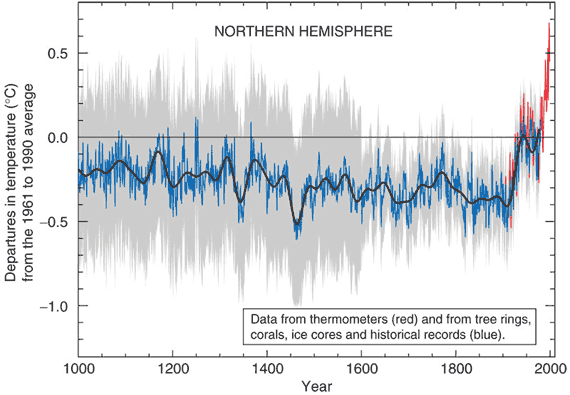Billy_Bob
Diamond Member
Happy Climategate day!
Yes five years ago today the lies and data corruptions of the CRU and so called climate scientists in general were exposed. WE found out that they were manufacturing data, manipulating the whole climate record and throwing out the empirical evidence.
The ten most descriptive and unprofessional conduct quotes from the emails;
When you look back at this mess and where we are today it amazes me that this lie still has legs.
Happy Climategate Day!
Source 1
Source 2
Yes five years ago today the lies and data corruptions of the CRU and so called climate scientists in general were exposed. WE found out that they were manufacturing data, manipulating the whole climate record and throwing out the empirical evidence.
The ten most descriptive and unprofessional conduct quotes from the emails;
- "OH FUCK THIS. It's Sunday evening, I've worked all weekend, and just when I thought it was done I'm hitting yet another problem that's based on the hopeless state of our databases. There is no uniform data integrity, it's just a catalogue of issues that continues to grow as they're found."
- "So, once again I don't understand statistics. Quel surprise, given that I haven't had any training in stats in my entire life, unless you count A-level maths."
- “I am seriously close to giving up, again. The history of this is so complex that I can't get far enough into it before by head hurts and I have to stop. Each parameter has a tortuous history of manual and semi-automated interventions that I simply cannot just go back to early versions and run the update prog. I could be throwing away all kinds of corrections - to lat/lons, to WMOs (yes!), and more.”
- "Bear in mind that there is no working synthetic method for cloud, because Mark New lost the coefficients file and never found it again (despite searching on tape archives at UEA) and never recreated it."
- "So.. should I really go to town (again) and allow the Master database to be ‘fixed’ by this program? Quite honestly I don't have time - but it just shows the state our data holdings have drifted into. Who added those two series together? When? Why? Untraceable, except anecdotally. It's the same story for many other Russian stations, unfortunately - meaning that (probably) there was a full Russian update that did no data integrity checking at all. I just hope it's restricted to Russia!!"
- "Had a hunt and found an identically-named temperature database file which did include normals lines at the start of every station. How handy – naming two different files with exactly the same name and relying on their location to differentiate! Aaarrgghh!!"
- "Here, the expected 1990-2003 period is MISSING - so the correlations aren't so hot! Yet the WMO codes and station names /locations are identical (or close). What the hell is supposed to happen here? Oh yeah - there is no 'supposed', I can make it up. So I have
"
- "Now looking at the dates.. something bad has happened, hasn't it. COBAR AIRPORT AWS cannot star[t] in 1962, it didn't open until 1993!"
- "So with a somewhat cynical shrug, I added the nuclear option - to match every WMO possible, and turn the rest into new stations (er, CLIMAT excepted). In other words, what CRU usually do. It will allow bad databases to pass unnoticed, and good databases to become bad, but I really don't think people care enough to fix 'em, and it's the main reason the project is nearly a year late."
- "Because although I'm thrilled at the high match rate (87%!), it does seem worse when you realize that you lost the rest.."
When you look back at this mess and where we are today it amazes me that this lie still has legs.
Happy Climategate Day!
Source 1
Source 2
 Basic
Basic Intermediate
Intermediate







